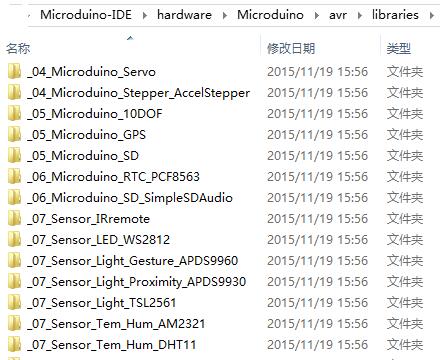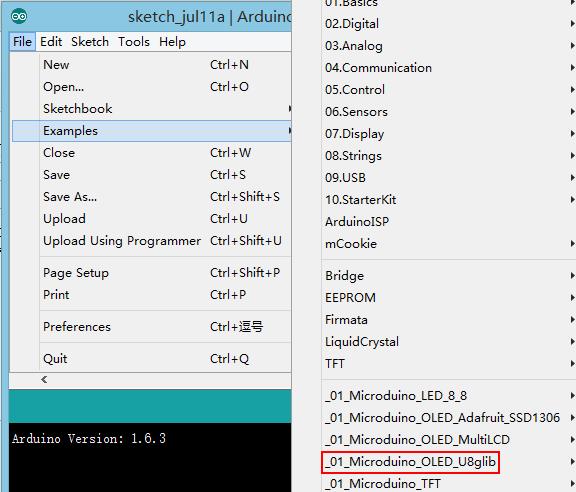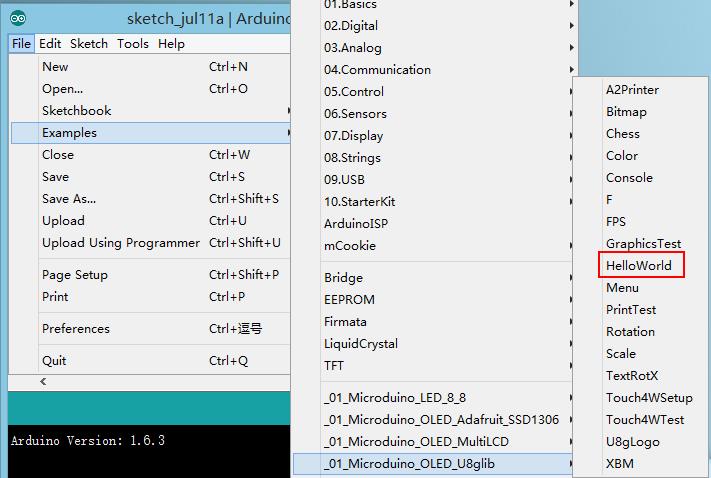Difference between revisions of "MCookie-OLED"
From Microduino Wiki
(→F&Q) |
|||
| (3 intermediate revisions by one other user not shown) | |||
| Line 5: | Line 5: | ||
[[file:mCookie-OLED-rect.jpg|400px|thumb|right|Microduino-OLED]] | [[file:mCookie-OLED-rect.jpg|400px|thumb|right|Microduino-OLED]] | ||
mCookie-OLED is based on SSD1306 0.96-inch 128*64 OLED display module, adopting the IIC (I2C) interface and communicating with the a core module by connecting to an IIC interface on [[mCookie-Hub]] or stacked directly on an mCookie stack. | mCookie-OLED is based on SSD1306 0.96-inch 128*64 OLED display module, adopting the IIC (I2C) interface and communicating with the a core module by connecting to an IIC interface on [[mCookie-Hub]] or stacked directly on an mCookie stack. | ||
| − | |||
| − | |||
| − | |||
| − | |||
| − | |||
| − | |||
| − | |||
| − | |||
| − | |||
| Line 32: | Line 23: | ||
==Document== | ==Document== | ||
| − | + | *Uses a SSD1306 module: https://www.google.com/#q=SSD1306+datasheet&* | |
*Uses the u8glib OLED library for control: | *Uses the u8glib OLED library for control: | ||
**u8glib Github: https://github.com/olikraus/u8glib | **u8glib Github: https://github.com/olikraus/u8glib | ||
| Line 68: | Line 59: | ||
*What is the voltage of the power supply? | *What is the voltage of the power supply? | ||
**3.3V | **3.3V | ||
| + | *What is the construction for the OLED when using the u8glib? | ||
| + | **Constructor with the '''U8GLIB_SSD1306_128X64''' used since this is the type of OLED module: https://github.com/olikraus/u8glib/wiki/device#ssd1306-128x64 | ||
==Purchase== | ==Purchase== | ||
Latest revision as of 03:35, 4 August 2017
| Language: | English • 中文 |
|---|
|
mCookie-OLED is based on SSD1306 0.96-inch 128*64 OLED display module, adopting the IIC (I2C) interface and communicating with the a core module by connecting to an IIC interface on mCookie-Hub or stacked directly on an mCookie stack.
ContentsFeatures
Specification
Document
DevelopmentFor the development, it need to be supported by _01_Microduino_OLED_U8glib library and check the library file here: (Installation Address)\Microduino-IDE\hardware\Microduino\avr\libraries
Projectu8glib Library Program Examples
Users can open other program examples and see the result. Other Projects: OLED Application FAQ
PurchaseVideo |







